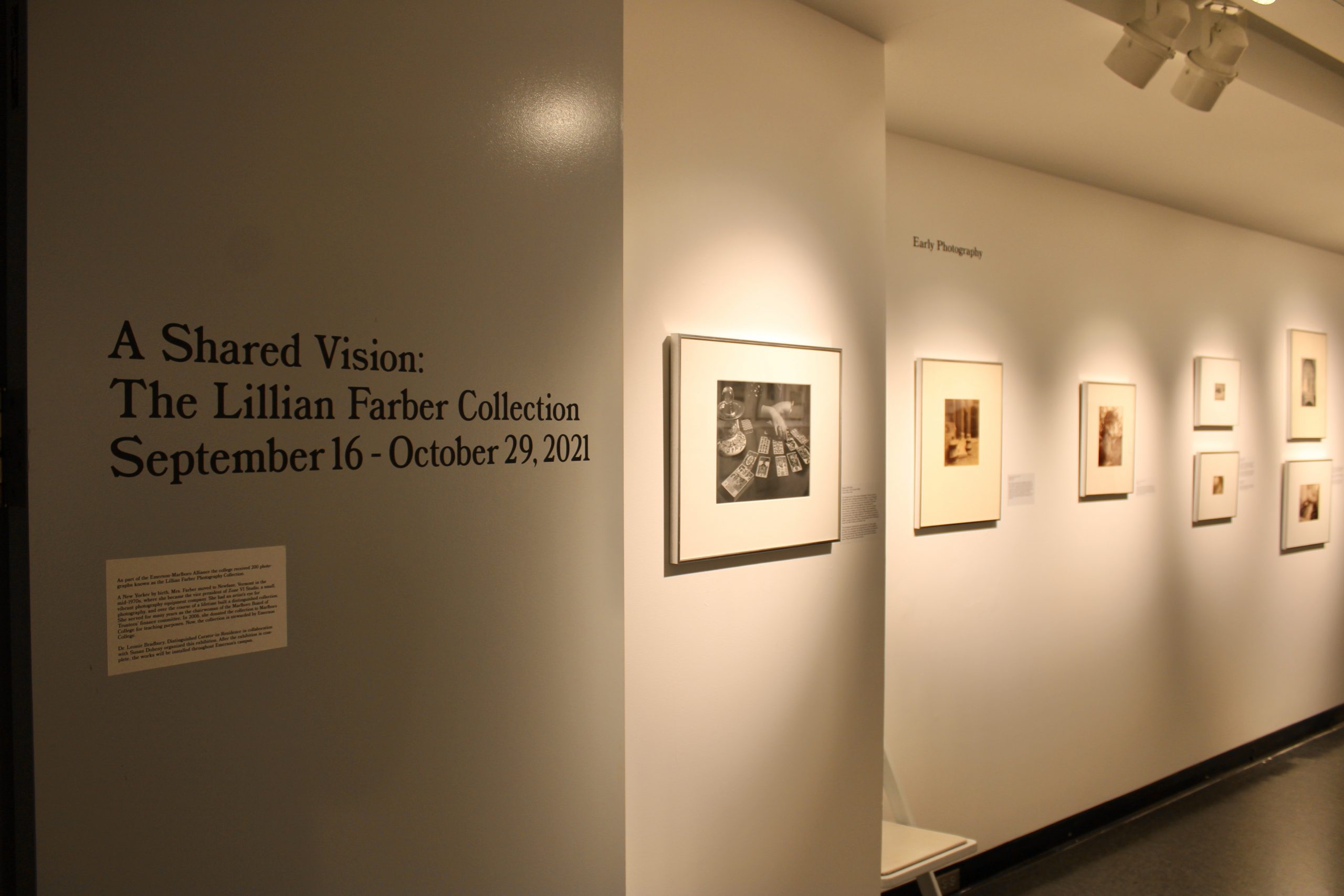A Shared Vision: The Lillian Farber Collection – A Student Response

The Lillian Farber Collection, housed in Emerson Contemporary’s Huret Gallery, illustrates the very core of what art is about: to inspire and influence the emotions of its viewer. When looked at for the first time, this collection seems to be a very random combination of photos ranging from photos of tarot cards to portraits of nude women to people walking in the street. Usually when you see a gallery, you expect the photos to all be connected in some way whether that be they are from the same time period, same artist, or just of the same subject matter. When you look at the Farber collection you see a range of dates and art from both historic and contemporary artists alike. What do these all have in common though? Lillian Farber’s love for art and desire to collect pieces that she thought were visually appealing and interesting. Farber said, “It hasn’t mattered who the photographer was, living or dead, acclaimed or unknown. Neither has the pedigree of the print; vintage, self-produced, staff- produced or mass-produced. All I had to do was love it.”
When you visit a museum or a gallery, you are not going to remember every single piece of art that you saw there. You remember the ones that really stuck out to you and made you feel something or maybe nothing at all. To Farber, this collection represents the works that stuck out to her the most. She did not care about the name of the artist or how old the piece was, she just cared about whether she liked it or not. And this is what art is truly about. Art is meant to be looked at and interpreted. Art has its own value for each individual viewer; it does not have to be from some big name like Dorothea Lange or Ansel Adams to be important. To me, this is what the Farber Collection symbolizes: a pure love of art for what it is.
Walking through this gallery is like a journey through time and place. You visit 19th century France looking at city architecture, go back in time to the industrial revolution with the rise of trains and boats as transportation, see the calming scenery of Vermont, view the working class people of London, visit New York’s Chinatown, walk alongside indigenous peoples as well as New York City inhabitants, join a game of cards, live through the Dust Bowl and the Depression, walk along the cliffs and plains of Iceland, see the beauty of the feminine, stand alongside families, and view a world of abstract dreams.
One of my personal favorites is the street photography. This continues the idea that art does not have to be widely recognized or of a spectacular subject to be special to us. The images in the street photography are just that: photos of people on the streets. This is something you see in everyday life, especially in the city of Boston. So why are these photos special? I believe they are special for that very reason: the beauty and art of everyday life. Such a mundane and common task as walking down the street takes on an unsuspected beauty and grace and intrigue in these photos. You want to know who these people are, where they are going, and where they came from. I love the romanticism of daily life. These pieces make you wonder how you could be in one of these photos and how that photo would make someone else feel the same way. Art is about feelings and attraction and inspiration and each piece can be special in its own way to us as the pieces in this collection were to Lillian Farber.
Author: Molly Berard